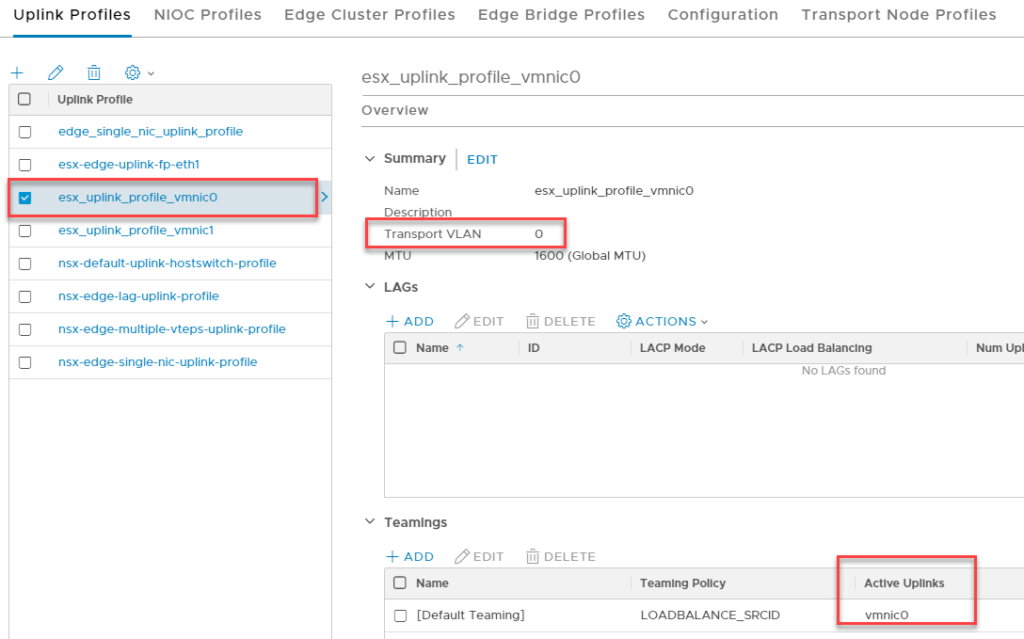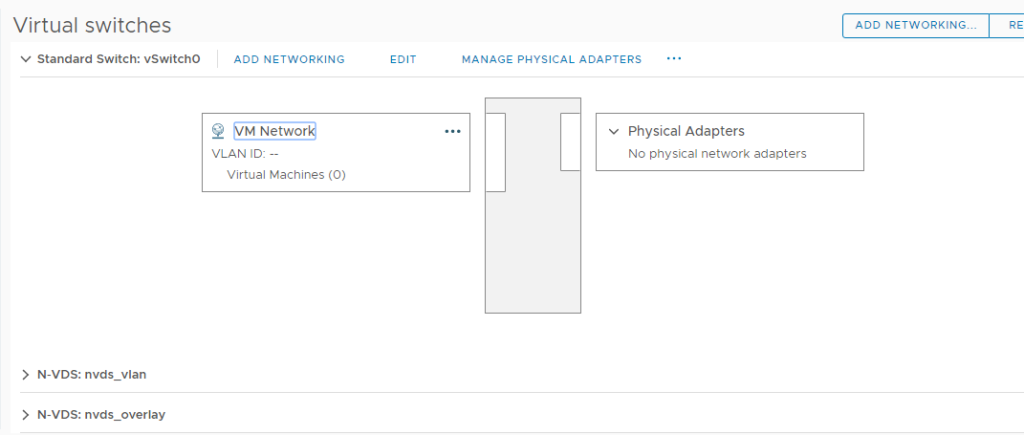Configure ESX hosts for NSX-T
This guide assumes you know the basics of an NSX-T deployment and are familiar with ESXi vSwitches and vmkernel ports.
This has a high probability of leaving your ESXi hosts with no networking if done improperly.
Install NSX Manager and Compute Manager etc…
Add Segments for your required VLAN ports.
Add two IP Pool ranges for TEP interfaces from separate subnets.
You will need the following Segments for the existing vmkernel ports edge and router interfaces.
- ESXi Management
- VMotion
- TEP Interface Edge
- Edge Management (you could put this on ESXi mgmt LS probably)
- Edge Uplink
- T0 Router Interface (this will be used for static routes in the physical network)
The end will look something like this…

Create the transport zones for the VLAN and Overlay Types

Create an uplink profile for the TEP interface uplink. vmnic1 in my case with the TEP IP needing to go on a 99 subnet (VLAN). We tag it here.

Create an uplink profile for the VLAN interface uplink. vmnic0 for me and since this is a VLAN interface and we will be adding tagged segments. Put a 0 for the VLAN.

Create a Transport Node Profile and add your NVDS switch for VLAN.
Remember to use the Uplink profiles designated for the right vmnic.

For the two mappings; map the vmkernel ports you have to the segments you created in NSX. These are simply tagged VLAN segments just like vSwitch port groups kind of.
In my case both are on the same subnet but I like to have two segments for funsies.
You will need to type the vmk port but the LS should be available for selection.

Add your Overlay NVDS to the Profile with no mappings.
Be sure to select the Uplink profile for the right vmnic. This one we will want the tagged uplink profile so that the TEP address can talk.
Be sure you are using a TEP IP Pool that does not share a subnet with the Edge TEPs.

Deploy the Transport Node profile to the cluster in vCenter managed compute space under Host Transport Nodes. This assumes you have added the Compute Manager and are familiar with deploying Transport Node Profiles.
If everything worked properly you should have your hosts up and they should be showing as UP and Configuration Success.

Post tasks..
- Clean up old portgroups and switches on ESXi hosts
- Leave a VM Network portgroup on a vSwitch0 on each host
- This is simply a place holder for the edge management
Your host switching should now look like the below picture.

Go to the next article in the series.

